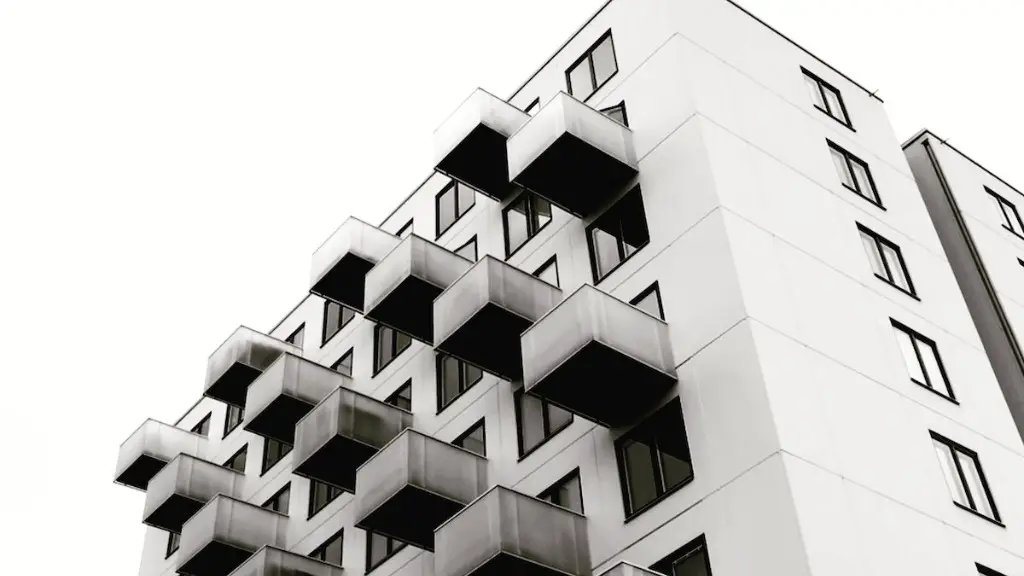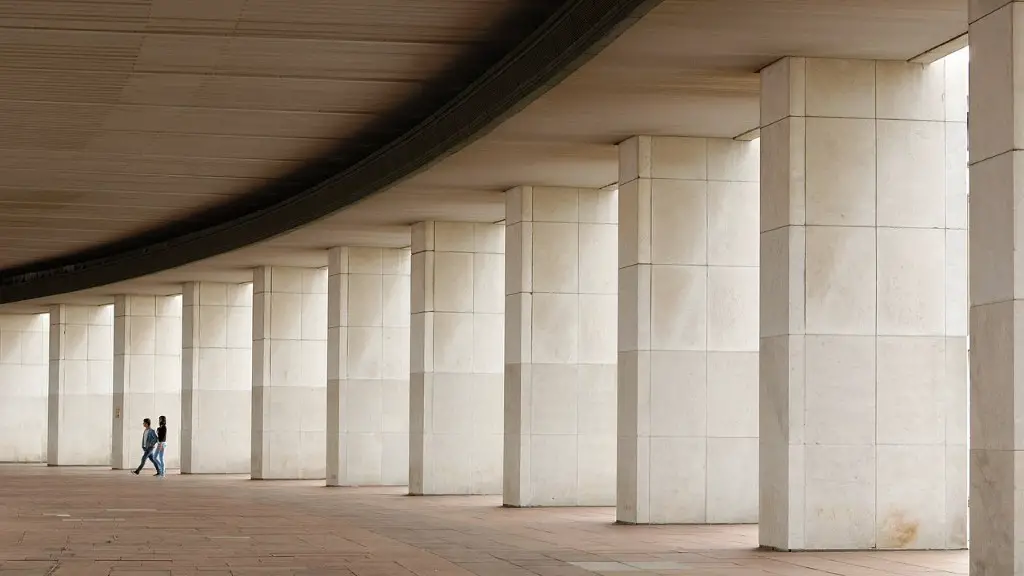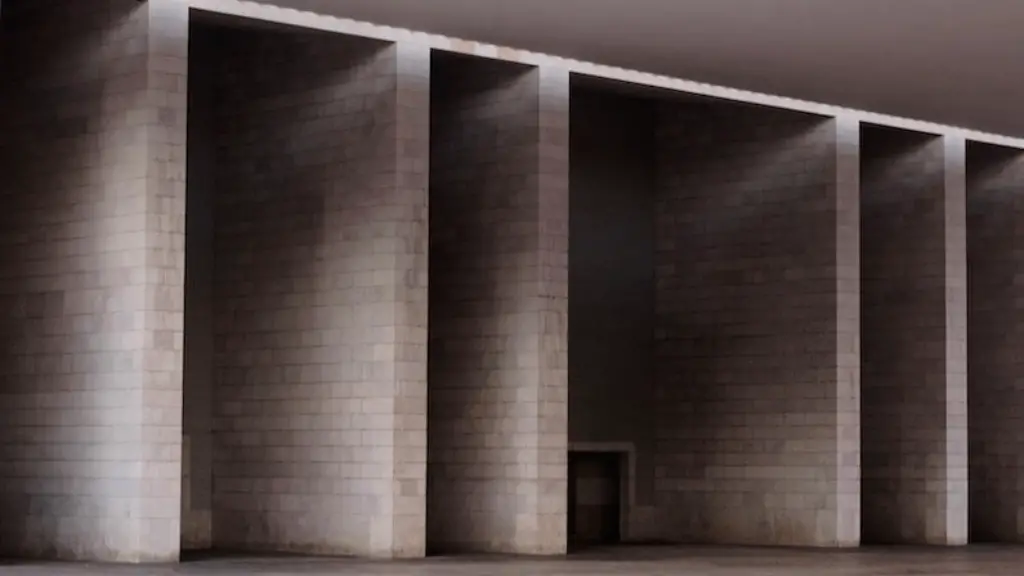The Role of Technology in Architecture
Architecture has been significantly impacted by technology in recent years, as a wide range of tools and materials have become available for planners and designers to work with. CAD software, for example, has become an integrative part of the design process for many architects, allowing them to create complex detailed virtual models of their projects before beginning physical work. As technology continues to progress, it is becoming increasingly easier for an architect to create a thoroughly planned and realized project without being in direct contact with their plans or an onsite construction team.
The ability to simulate a project before beginning construction has a number of advantages, from reducing the amount of physical scaffolding and structure needed onsite to the extensive mapping of materials possible in digital planning. In addition, CAD software is often capable of identifying issues that might occur with certain choices of materials or combinations of individual components, reducing the likelihood of construction errors in the finished project. Ultimately, the use of this software is expected to lead to better projects as each plan can be executed with greater efficiency and accuracy than ever before.
The Unforeseen Monetary Benefits
Not only is the use of technology allowing the architect to create more efficient designs, but it is also benefitting the project’s budget in the long term. Digital mapping of projects allows architects to focus on making the most effective use of their resources and materials, cutting down on unnecessary costs, in addition to preventing errors that could lead to work needing to be redone.
In addition, technology is allowing architects to cost out their projects more accurately. By breaking down projects into their individual parts, architects are able to see what construction stages cost the most, as well as predict any additional expenses that may arise. This in turn allows them to not only make more informed decisions about their projects, but to also ensure that their projects are completed within their original budget.
The Choice Between Contemporary and Traditional
Nevertheless, technology is not the be all and end all of architecture. While its use is advantageous for more complex projects, there are still plenty of projects that find more beauty in a more traditional building design. This can include anything from large stone Cathedrals to small brick cottages, and anything else in between.
The choice between contemporary and traditional architecture is ultimately up to the project’s designers and their overall aesthetic goals. Technology has the capability to give a modern twist to a classic structure, while still ensuring that traditional aspects of construction are respected. Whether the goal is to capture a contemporary look, or to give a nod to classic design, the use of both modern and traditional methods will help ensure success.
Living Buildings: Combining Technology and Nature
More recently, architects have begun pushing the boundaries of structure and design with the creation of ‘living buildings’. By integrating both technologies and more traditional building elements, living buildings are being created that are both ecologically and energy efficient. While these structures do require a great amount of consideration and preparation, they can be incredibly rewarding when completed.
With the right amount of planning and data manipulation, architects are now able to create structures that are powered by sustainable energy sources and even make use of recycled materials in its construction. By creating carefully crafted designs, these structures are able to stand side by side with traditionally built buildings, making a statement through their elegance and energy efficiency.
Accessible and Affordable Design
As technology continues to evolve, so too does architecture. Thanks to computer-aided design programs, smaller independent projects are now able to take more risks and explore more creative solutions for success. With this newfound freedom, architects are now able to design at a much more efficient rate, meaning that potential clients no longer have to worry about wasting their money on costly designs that don’t meet their needs.
Computer-aided design is more accessible for the everyday designer as well, meaning that those who are just starting out in the business can now access the same basic materials and tools as larger companies and design firms. This has opened up a greater world of possibilities for aspiring architects and has allowed them to focus less on costly physical tools and more on the creative aspects of their projects.
The Future of Sustainable Architecture
The combination of modern technology and traditional building techniques is allowing architects to create structures that benefit both the planet and its inhabitants. Living buildings, for example, can be powered almost entirely by renewable energy sources and even rely on sustainable materials for their construction. The ability to create these structures is possible thanks to the integration of CAD programs within the design process.
Not only are these structures ecologically beneficial, but many of them are also able to incorporate impressive design and aesthetic elements. By combining these two aspects, architects are now able to create structures that both blend in with their environment and also serve a purpose. This integration of sustainable methods and aesthetics is key to allowing architecture to have a positive future.
Next Level Interiors: Matching Quality With Practicality
As technology continues to progress, so too does the level of detail achievable in the interiors of buildings. Modern CAD programs allow planners to develop complex structural meshes for walls and floors, and even detailed simulations for lighting and other fixtures. This allows architects to not only follow industry standards when creating specific material elements, but also to explore more creative and efficient uses of their resources.
What’s more, the use of simulation technology also allows architects to accurately plan and assess what materials would work best in certain settings, as well as suggest where more efficient solutions can be found. By being able to identify potential issues early on, planners are able to drastically reduce the amount of work needed to complete their projects, as well as ensure all elements come together correctly.
Intertwining Digital with Physical
The use of modern technologies is allowing architects to develop projects at a much faster rate, while also maintaining a higher quality in their design. As CAD programs become more detailed and sophisticated, they offer planners the ability to accurately map out every aspect of their projects before beginning physical work. In addition, simulation technology is allowing architects to ascertain the best course of action for specific projects at a much lower cost and risk involved.
Finally, with the combination of CAD programs, simulation technology and traditional building techniques, architects now have a wide range of options from which to create any project. As technology continues to become more available and accessible, it is likely that the future of architecture will involve an even stronger bond between digital and physical plans.
The Growing Innovation of Architects
Since its inception, the field of architecture has been heavily intertwined with technology. As technology has advanced, so too has the level of detail achievable in a project. From the ability to create detailed simulations of lighting and structural meshes, to the use of powerful CAD programs to accurately map out materials, modern architecture relies on technology to bring projects to life.
As technology continues to progress and become even more integrated within the planning of projects, so too will the capabilities of the architect. By respectfully intertwining the traditional and the modern, architects now have a much wider selection of tools and materials to work with, which will ultimately lead to better and more efficient projects.
The Social Impact of Digital Projects
As mentioned before, the tremendous growth in technology is allowing smaller projects to explore more creative and detailed solutions to their designs. In addition, the use of simulation technology provides architects with an efficient method of assessing the potential repercussions of a certain design choice, thus allowing more risks to be taken without having to worry about the adverse effects of such decisions.
By having the ability to create more efficient and accessible structures, these projects are able to benefit societies in a variety of ways. Digital projects are now able to create stronger community ties and in turn can lead to further community growth and development.
The Expansion of Technology in Architecture
The proliferation of modern technologies in the field of architecture is allowing projects to explore more ambitious options than ever before. With the help of powerful mapping and simulation tools, any project can start off with a strong plan and design with little to no risk involved. In addition, the use of technology is also allowing smaller projects to access tools and materials that are normally only available to larger firms.
Ultimately, this access to technology is expected to have a positive effect going forward, with more and more intricate designs being made possible thanks to the advancements in software and machinery. The future of architecture looks vibrant and full of potential, as the integration of modern and traditional building methods is bringing a new level of sophistication to the field.
The Interconnection of Architects
It is not just the physical structures that are benefiting from the shift in technology, but also the relationship between architects. Digital mapping and design software is allowing architects from all over the world to connect and collaborate on projects from a distance. This in turn is increasing the opportunities for architects to explore foreign building techniques, as well as break into different markets.
The interconnectivity of the creative world is also allowing for former unknowns to be exposed to a global audience, as well as providing them with a platform to market their work. The social aspect of modern architectures is expected to blossom with the proliferation of new technologies, allowing architects to have access to a wide range of options when it comes to designing their projects.
Exploring New Technologies
Not only is technology now allowing for better structures, but it is also making it simpler for architects to explore new methods. Robotics, for example, are now taking a more integral role in the construction of certain projects, with the ability to carry out complex tasks at a faster rate than humans can manage. In addition, drones are also being used in construction, allowing for quick and accurate surveys of projects and materials.
As technology becomes ever more advanced, the applications of robotics and drones are expected to further increase in the field of architecture. With the ability to complete more tasks efficiently, these tools are becoming essential parts of the process, allowing projects to move along swiftly and without any unexpected issues.
Mapping the Skyline With Modern Aesthetics
With tools such as CAD programs and modern robotics, architects are now able to craft complex designs at a fraction of the price it would normally cost. What’s more, certain structural aspects can now be completed faster than ever before, as well as with more accurate results. This in turn is allowing larger projects to be completed with greater efficiency, ensuring that a larger amount of projects are able to take advantage of this method.
In addition, the use of modern aesthetics is also allowing certain structures to stand out from the rest. By taking advantage of different types of materials and building methods, architects now have the ability to craft structures that are both functional and visually pleasing. By combining modern technology with traditional building techniques, architects are now able to craft buildings that are captivating and memorable.
Labeling the Future of Architecture
In conclusion, the future of architecture looks incredibly promising. Thanks to modern technologies and traditional building





